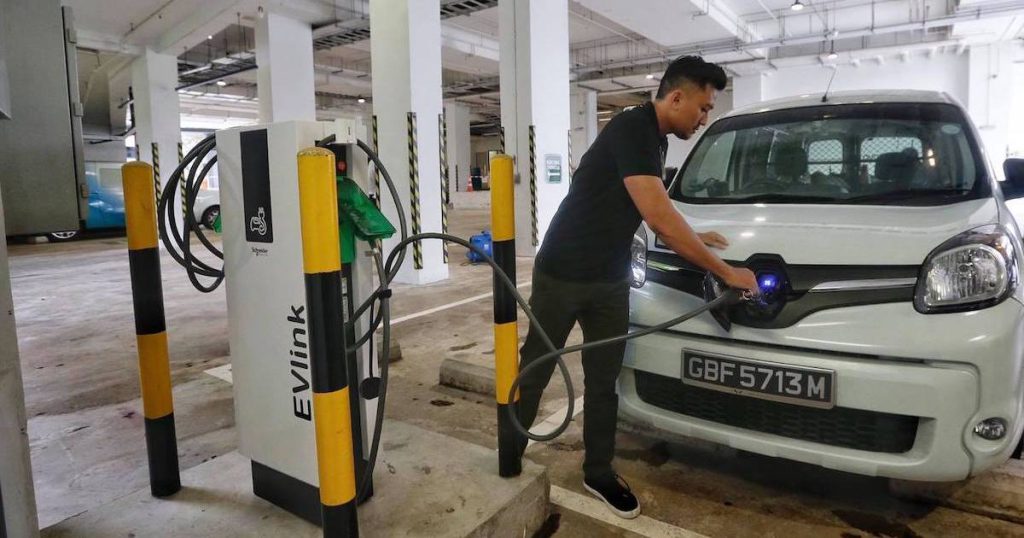Like many countries, Singapore has big plans to go green and move towards using cleaner energy sources to lower our carbon footprint.
To achieve that, targets have been set to have 100 per cent of our vehicles running on cleaner energy by 2040. It is an ambitious and visionary goal, and no doubt, one that would bring incomparable benefits to our quality of life when reached.
Judging by the upward trajectory of electric vehicle (EV) sales today, a decarbonised economy is likely to become a reality. In fact, one could say that Green Plan 2030 has more likelihood of success than the ill-fated Goal 2020.
However, for the continuous growth of EV sales to be sustainable and not just an extrapolation of numbers, there must be adequate infrastructure to make EV adoption feasible.
The question is, do we have what it takes to achieve a successful transition to EVs?
Ramping up our charging network
A car is a pointless piece of metal if it does not run, and one of the barriers to EV ownership has always been, ‘what if I run out of battery juice on my journey? Where would I charge it?’ This is a legitimate concern and the main obstacle deterring car buyers worldwide from opting for an EV.
Moreover, a lack of charging infrastructure exacerbates the long-held assumption that driving an EV is a hassle. Therefore, to support a transition towards EV usage, the government must assure their people they will be able to charge their cars conveniently and reliably.

This is even more important in Singapore, where most of us live in high-rise buildings and do not have the luxury of charging our cars overnight in our front yards.
After all, an EV is a symbol of our collective aspirations to better the environment. It is not an elitist indicator where only those who live in a landed property can enjoy the ease and benefits of using one.
Therefore, building enough public charge points is the make-or-break for EV adoption in Singapore. So far, we are doing quite alright, with over 3,000 charging points available for approximately 4,500 EVs. While there are areas such as Jurong where charging stations are few and far between, this is about to change.
There are plans to make every HDB estate an EV-ready town by 2025, as well as increase the number of charging points to 60,000 by 2030, of which 40,000 will be in public car parks and 20,000 in private premises. In addition, there is also an EV Common Charger Grant to provide management of private condominiums with the incentive to install charging points on their premises.
All of this is good news, because for EV adoption to permeate through the masses, it is not just the numbers that matter. By not leaving the deployment of charging stations entirely to free market forces, we can avoid a postcode lottery and ensure an equal distribution of charge points across the nation.
And guess what? This accessibility of having charging infrastructure near homes and offices will be the key ingredient that marks a smooth transition towards EVs.
Capitalising on our geographical luck

Our strategic location has played a part in our success as a global maritime hub. Turns out, our small size is what gives us an advantageous position to support the EV transition.
As a densely built-up city-state, we have a solid infrastructure of suburban malls, multi-storey car parks, and massive transport hubs. This allows multiple charge points to be connected to the electricity system without the fear of insufficient capacity in the existing network.
Unlike other nations, Singapore will not have to deal with the slow and expensive process of upgrading the grid infrastructure to enable high-power grid connections in remote areas. Neither do we need to grapple with massive road works to upgrade our grid to enable on-street charging.
In a way, Singapore is the perfect urban environment designed for EVs to thrive. As city dwellers who mostly travel short distances, one single charge is enough to last an average driver for a week.
Followed by infrequent charging that takes place overnight, a sceptic’s fear of EVs overtaxing our electricity grid, causing blackouts and a return to the dark ages is nothing more than fear mongering.
Banking on the political will for success
EVs are still a minority in the total car population today, and we are clearly still in the infancy of building all the necessary infrastructure to support EV adoption.
However, efforts to develop an integrated charging network, alongside initiatives to shore up public awareness of EVs indicate a political will to make our transition a success.
Aided by a highly developed urban landscape and compact land size, the infrastructure to support our electric dreams is set to shine in the years to come. And by then, we will be more than ready to usher in an even greener city.
Featured Image Credit: Land Transport Authority of Singapore










